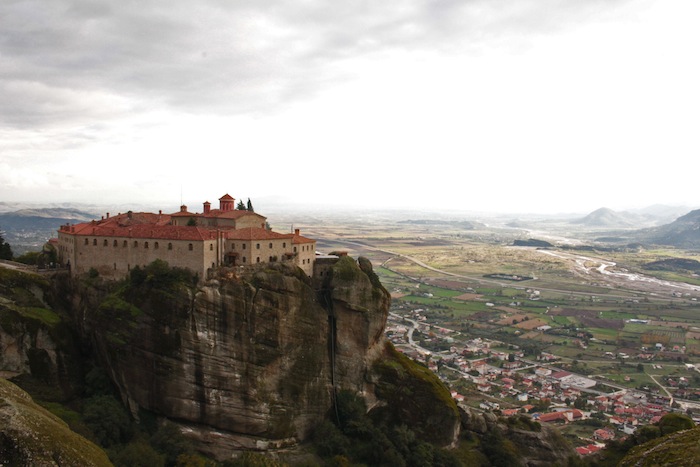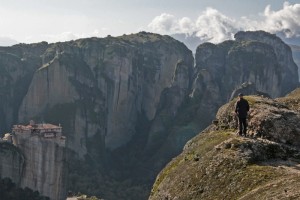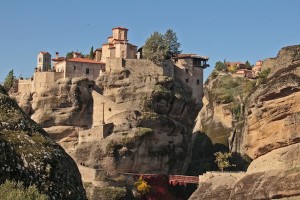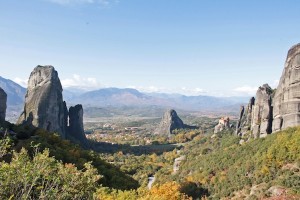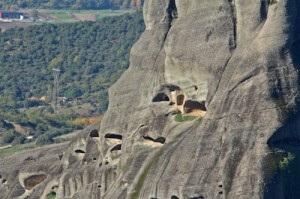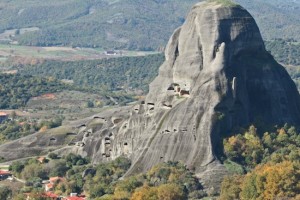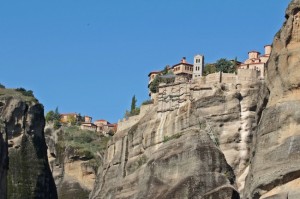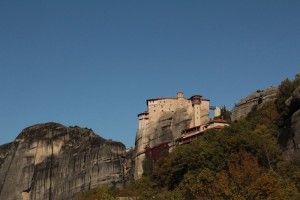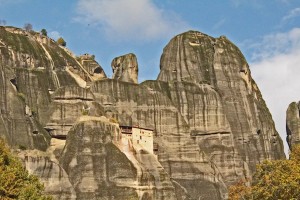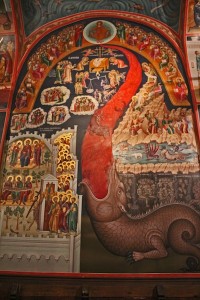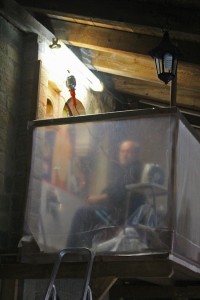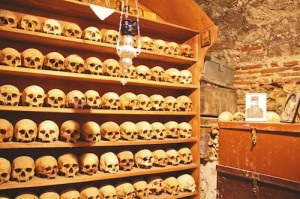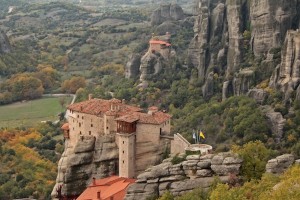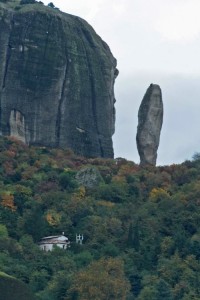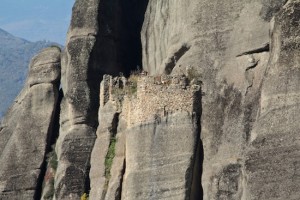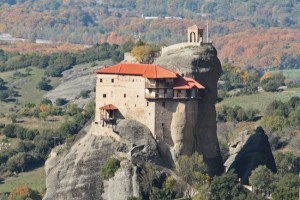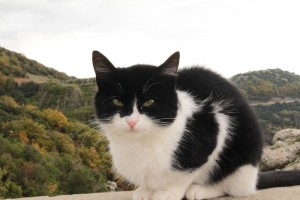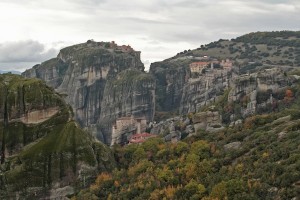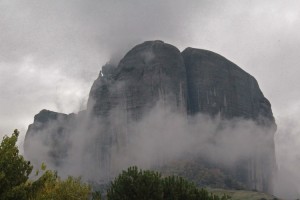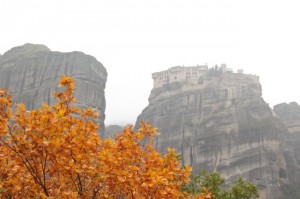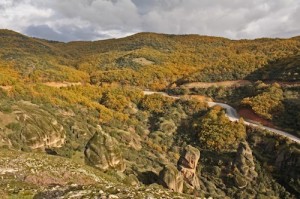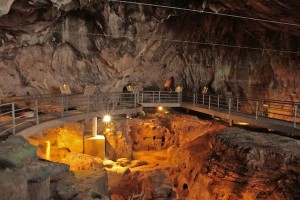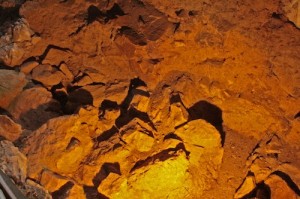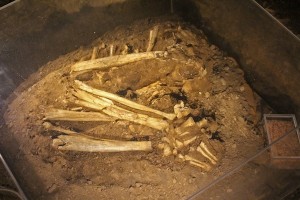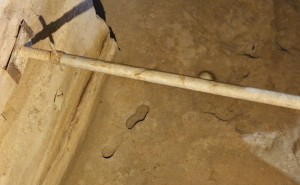There are few places in the world, if any, where James Bond, religion and rock-climbing come together, but in a special place in Greece they do so, spectacularly.
The sacred monasteries of Meteora cling improbably to tiny cliff tops above the villages of Kastraki and Kalambaka. “Meteora” appropriately means “suspended in the air” in Greek and the monasteries have dominated the skyline for centuries. It is second only to Mount Athos as the most important religious site in the country.
The area took on its holy mantle in a far more humble way, when hermits began to inhabit the caves in the sandstone peaks in the 9th century. With barely any shelter and the occasional meal hoisted up to them from the villagers below, for nearly two centuries men climbed the cliff faces to commune with their god.
By the 14th century wealthy patrons helped religious communities literally “scale-up” to building monasteries.
A system of ropes, pulleys, long ladders and medieval cargo nets brought building materials and supplies hundreds of meters up to the cliff tops.
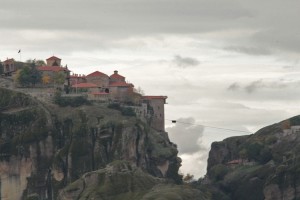
The thin line and small box in the centre of the photo are part of the still-working ancient pulley system for transporting goods
The difficult access intentionally deterred visitors, but not the monks and by 1500 there were twenty-four monasteries. They were not only great builders, but also stunning artists and their iconography is considered some of the best in the world.
The communities flourished until the 17th century. There are only four monasteries and two convents remaining from the original two dozen and like their locations, their survival is on a knife-edge.
None of the monasteries has more than three monks; one has just a single priest. The nuns, who took over two failed monasteries only a few decades ago are doing much better and number around forty.
Now the pilgrims come in tour buses, to marvel at the incredible dedication and skill of the men who made Meteora. Hollywood also could not resist the draw of such drama and the Holy Trinity monastery featured in the famous climbing scene in the James Bond movie For Your Eyes Only.
Meteora is said the be the inspiration for the Eyrie of Vale of the House of Arryn in Game of Thrones
And some of their punishments would befit the series. Errant monks were forced to live precariously on suspended platforms inside a cave in an isolated rock.
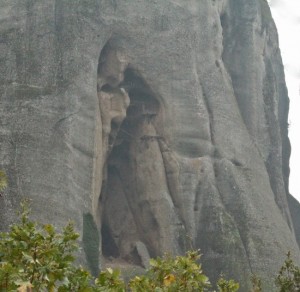
The punishment cave, with wooden platforms high up in the cave where monks were left to consider their sins
On our first day they were shrouded in damp, clinging mist that obscured even the closest buildings, giving it an eery feeling without the need for Hollywood props.
But when the sun shines, the whole hillside glows.
Many of the monasteries may have now crumbled into the rocks that once held them aloft and the monks may have dwindled in number but the remaining buildings are a constant and fitting reminder of their history, extraordinary skills, passion and determination.
The monks of Meteora may be the most famous inhabitants of the area, but they are not the earliest, not by millennia.
The Theopetra cave is also a unique habitat. Scientists say the cave has evidence of continuous occupation dating back from 50,000 years until 5,000 years ago; showing a transition from Neanderthal to modern humans, from hunter-gatherers to arable farmers. It includes a stone wall considered to be the oldest recorded man-made structure in the world, built 23,000 years ago to protect the cave dwellers from the cold winds of the ice age.
It also contains what Greek archaeologists claims to be the oldest recorded human footprints.
The cave dwellers are long gone and the monks may not be far behind them, but both communities have left their mark and allow us a fascinating insight into lives lived long ago in the extremes of nature.

